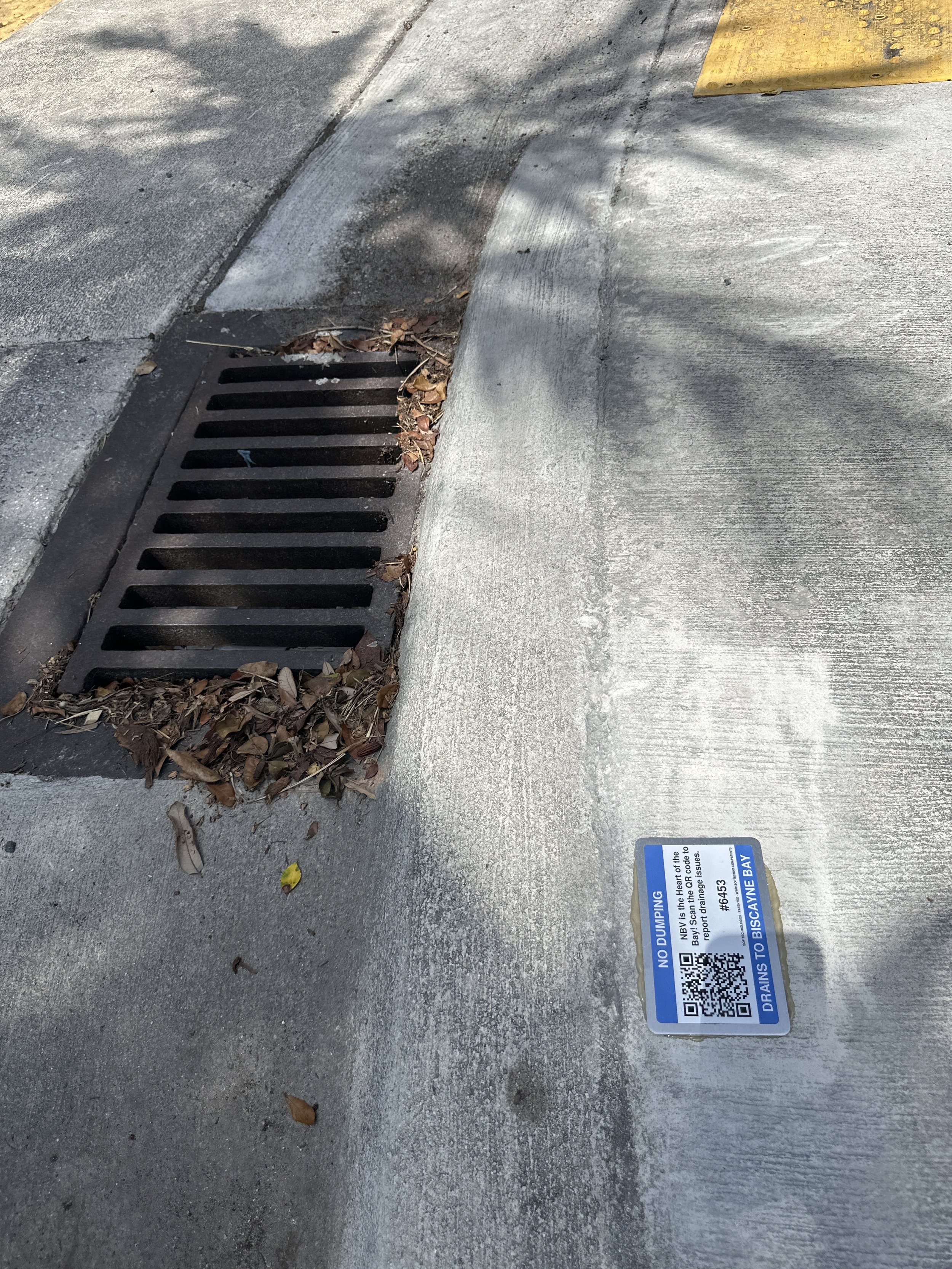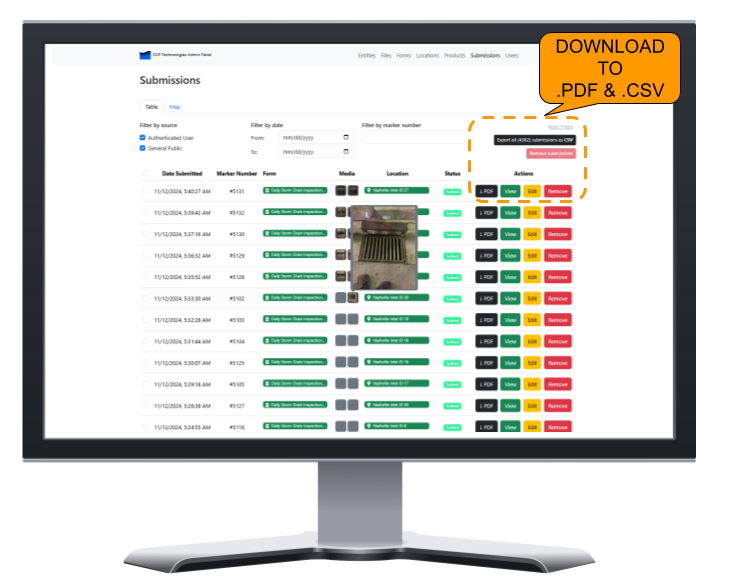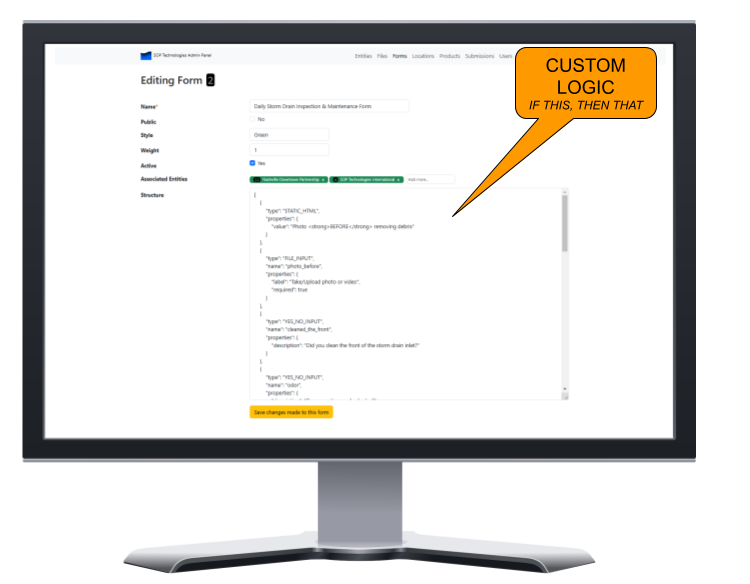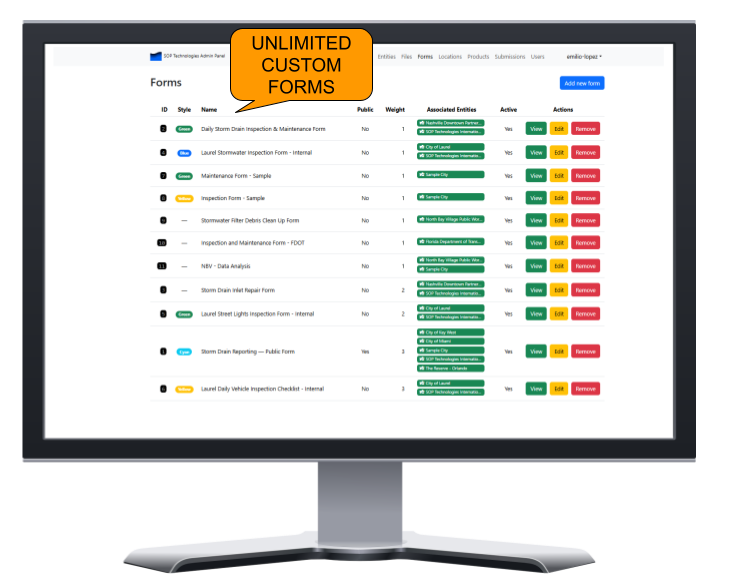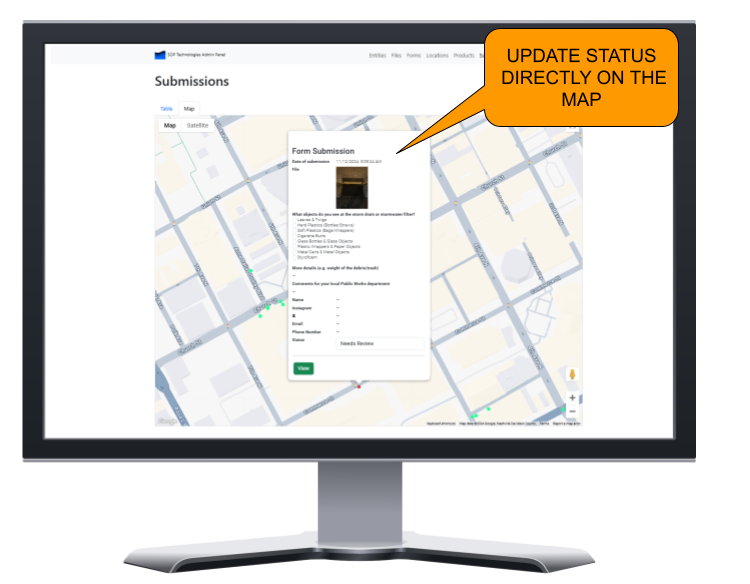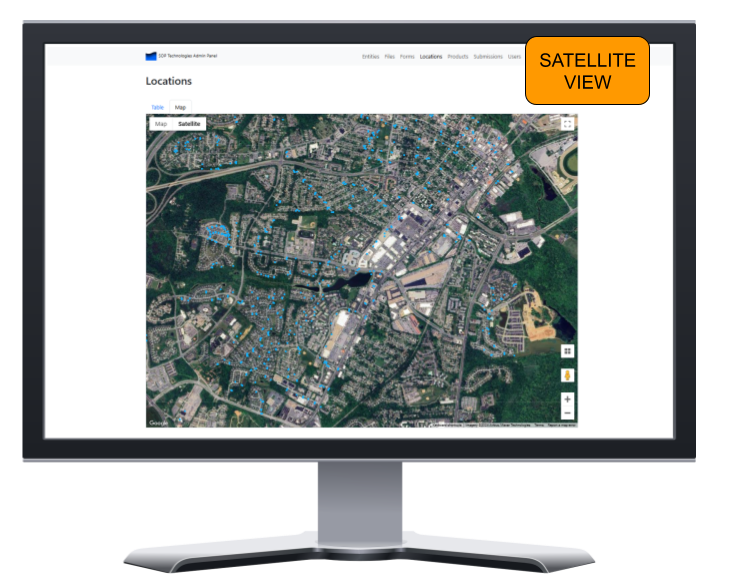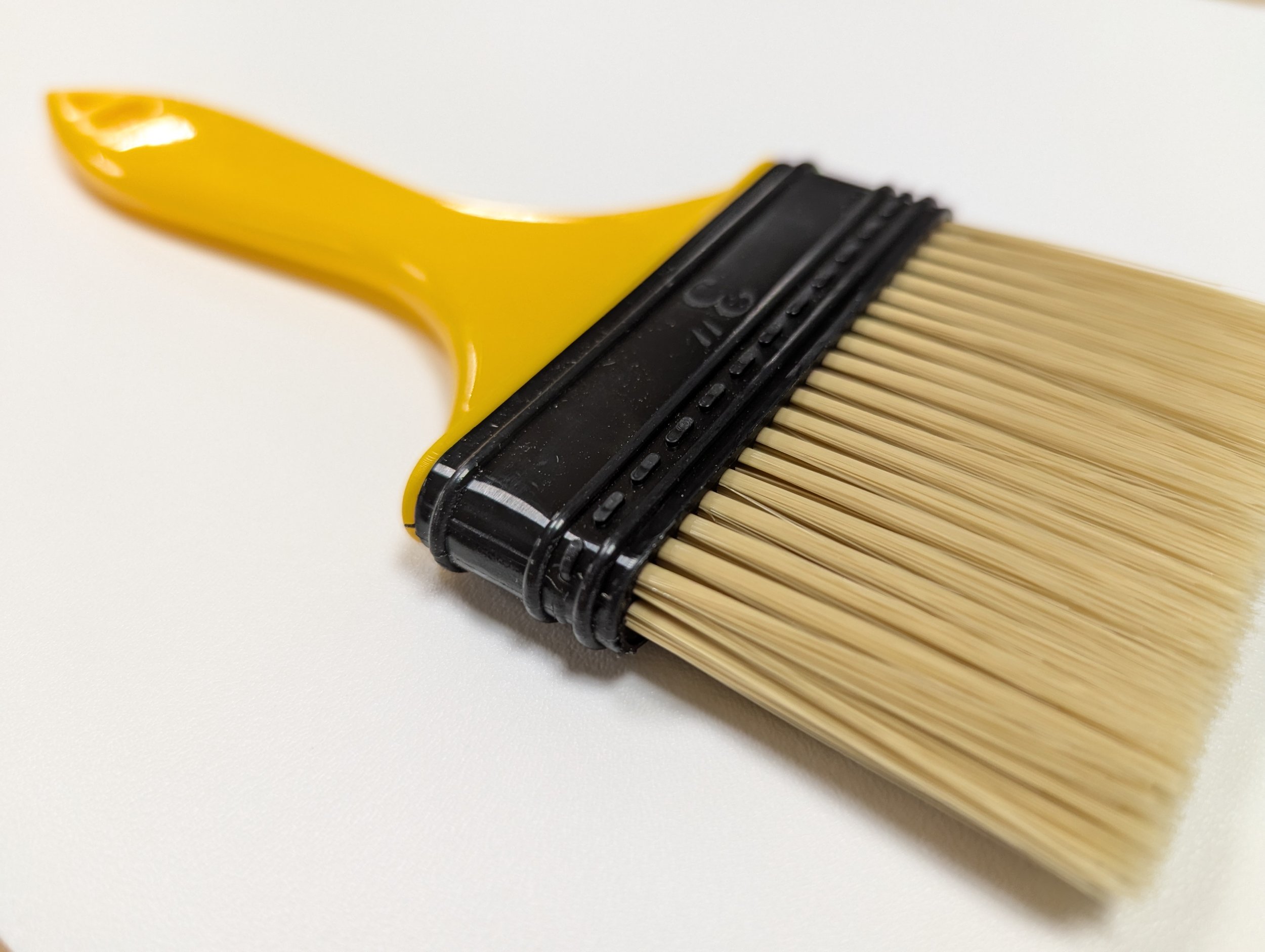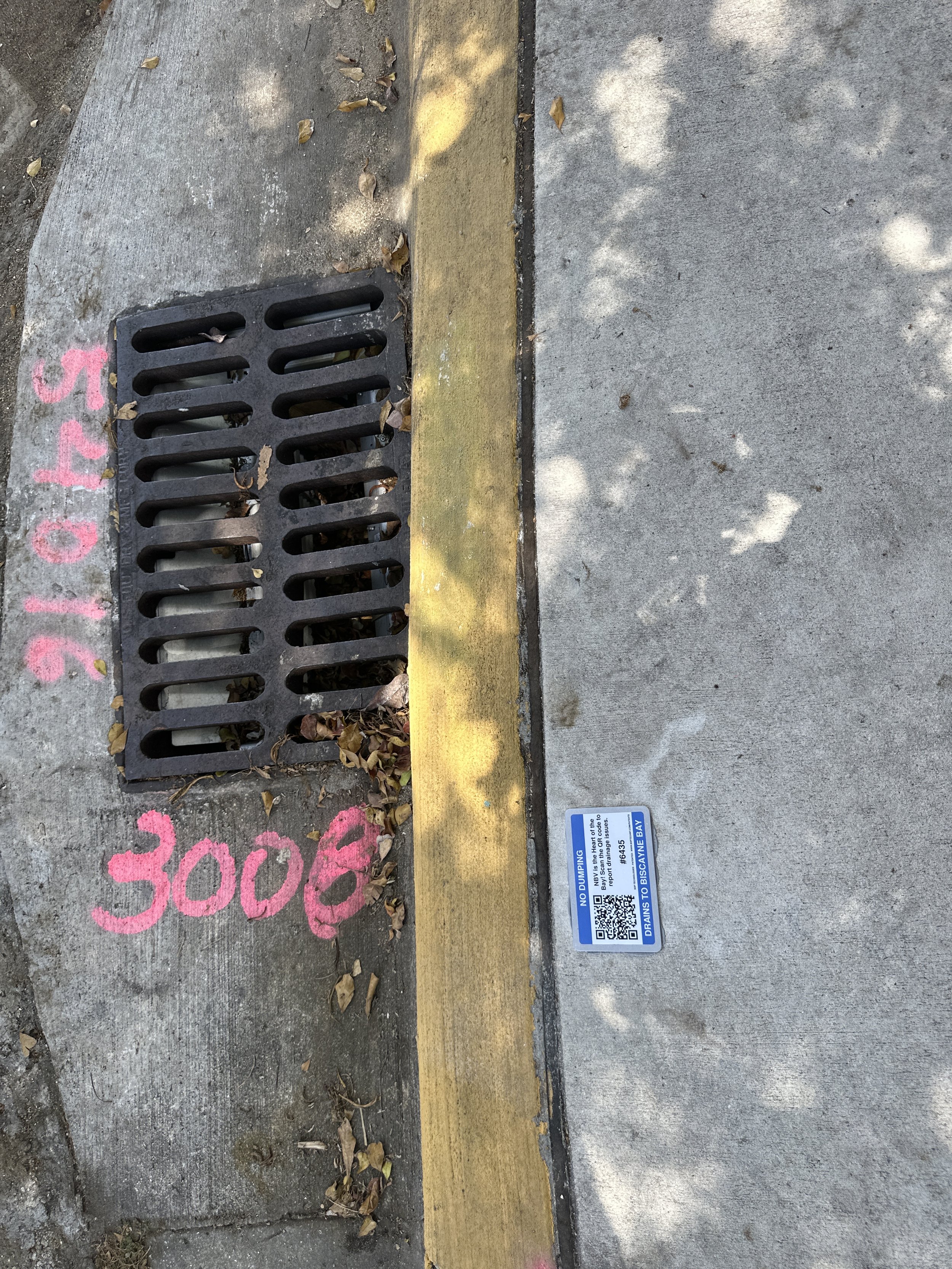
Software with QR Code Markers
Patented QR Code Storm Drain Markers with SOFTWARE
Empower Your Community: Anyone with a smartphone can scan the QR code on the storm drain marker and easily report what they see directly to your team. They can even upload a photo! Your team will instantly receive an email with the location, photo, and details.
Branded for Your Organization: We'll customize the webpage and forms with your city/county/entity logo, creating a seamless and professional experience for your community. For your internal team, we can create custom forms tailored for asset management, inspections, maintenance, and more, accessible through a secure login.
Durable and Reliable Markers: These 5" x 3" markers are made from durable aluminum with pre-adhered labels, ensuring they can withstand the outdoor environment for years to come.
Centralized Management: Our online admin panel provides a single, easy-to-use interface to track and manage all your QR-marked storm drains. Gain valuable insights and streamline your stormwater management efforts.
Software Subscription Plan Includes
Once your QR Code Storm Drain Markers are delivered, you will receive 90 days of free access to the SOP Technologies online web application. Continued use of the software requires a subscription after the initial period.
Unlimited Users
Full Access to All Software Features
Dedicated Technical Support & User Training
Create Unlimited Custom Forms
Application Programming Interface (API)
ORDER NOW
-
ORDER NOW -
15 Patented QR Code Storm Drain Markers that comes with labels already adhered to the aluminum plate. These storm drain markers measure 5.5" x 3.5" (plate) and 5” x 3” (QR Code label).
Note: Your new QR Code Storm Drain Markers come with 90 days of access to the SOP Technologies software. Continued use of the software requires a subscription after the initial period.
Select the Installation Pack based on the quantity of QR Code Storm Drain Markers you need to install. The Installation Packs have the necessary equipment needed to install SOP Technologies QR Code Storm Drain Markers.
SOFTWARE Mobile View
Custom Form for the General Public When the QR Code Marker is Scanned.
The public can:
See a customized landing page with your entity’s logo on top
Upload photos or other media
Enter additional comments, fill out a form, and add contact details
Learn about your efforts to address stormwater pollution
You Receive:
Email notification with location details and form submission content
Custom actions based on the type of form submitted
Admin panel map pins can change colors to show status by each specific location
Integration with other systems you currently use
Internal Forms to Perform Asset Management, Inspections, Logging Maintenance, etc.
Custom Fields such as Photo Upload, Video Upload, Checklists & More
Product Locator: Use your smartphone or table to easily locate QR Code Markers while you’re in the field.
Online Admin Panel Features
Interactive Map And Table Views
Create unlimited Custom Forms for the public and internal users as well
Filter Form Submissions
Export Form Submissions data to .PDF and .CSV file formats for easy reporting and analysis
Build Custom Actions / Logic (examples)
If this box is checked, send me an email notification
If this form is submitted, set the status to Needs Review
If this form is submitted, send a notification to a different team
Consumables for installing QR Code Storm Drain Markers
+ Adhesive
+ Gloves
+ Wire Brush
+ Paint Brush
SOP Technologies Patents and Patents Pending
The word “QR Code” is registered trademark of DENSO WAVE INCORPORATED.


